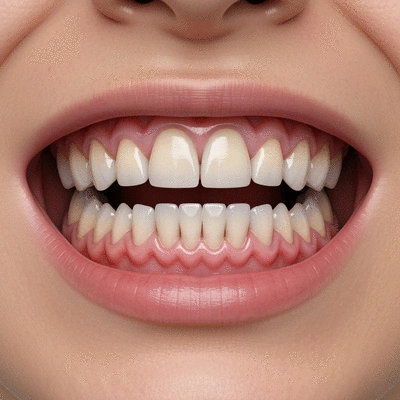Stages of Gum Disease
- •Gingivitis: Reversible, inflamed gums.
- •Early Periodontitis: Pockets form, gums pull away.
- •Moderate Periodontitis: Bone destruction, loose teeth.
- •Advanced Periodontitis: Significant bone loss, tooth loss.
Welcome to DentistFortMyers.com – Your Guide to a Healthier Smile in Fort Myers!
Oct 23
Click the play button above to listen to the article
What if a simple daily habit could save your smile? Understanding gum disease is essential for maintaining not just your oral health but your overall well-being. Let’s dive into the key insights that will empower you to take control of your dental care.
Understanding the stages of gum disease and its systemic connections is vital for maintaining overall health.
Oral health is integral to overall wellness.
Gum disease is a common yet serious condition that affects the tissues supporting your teeth. It primarily comes in two forms: gingivitis and periodontitis. While gingivitis is the milder version, characterized by inflammation and irritation of the gums, periodontitis is more severe, resulting in damage to the bone and tissue supporting the teeth. If left untreated, periodontitis can lead to tooth loss and other health complications. For a comprehensive overview of gum disease and its impact, the Centers for Disease Control and Prevention (CDC) provides valuable information.
Understanding these two types is crucial because they reflect different levels of severity. Gingivitis can often be reversed with proper oral hygiene, but periodontitis requires more intensive treatments. That's why at DentistFortMyers, we emphasize the importance of consistent oral care to prevent these issues from escalating!
In summary, recognizing these conditions early can make a significant difference in your treatment outcomes. Regular checkups at your dental office can help catch these early signs, ensuring you maintain the healthiest smile possible.
Several factors can contribute to the development of gum disease. Key causes include:
At DentistFortMyers, we often remind our patients that understanding these risk factors is the first step in preventing gum disease! Further insights into the importance of oral health and prevention can be found in a report by the Illinois Department of Public Health, highlighting strategies for maintaining good oral hygiene.
Oral bacteria play a central role in the development of gum disease. When plaque accumulates, harmful bacteria can thrive, leading to inflammation and infection of the gums. This process creates a vicious cycle: as the gums become inflamed, they're more susceptible to further infection.
This is where the importance of maintaining a daily oral hygiene routine comes into play. Consistent brushing and flossing can help manage these bacteria and prevent the formation of biofilm that leads to more severe gum issues. Regular visits to your dentist also ensure that these problems are caught before they escalate!
Identifying the early symptoms of gum disease is crucial for timely intervention. Common signs include:
Being aware of these symptoms can help you take action sooner. If you notice any of these signs, don't hesitate to reach out to DentistFortMyers for advice and potential treatment options!
Gum disease progresses through distinct stages, starting with gingivitis and evolving into periodontitis. Each stage presents unique challenges and risks:
Understanding these stages helps you recognize the urgency of treatment. It’s always best to consult your dentist at the first sign of trouble!
Advanced gum disease is associated with several systemic health risks. Research suggests links between gum disease and conditions such as:
At DentistFortMyers, we encourage our patients to see their oral health as part of their overall wellness. Maintaining healthy gums isn’t just about your smile—it’s about your health!
What do you think about the importance of early detection in gum disease? Have you or someone you know experienced symptoms? Share your thoughts below:
A1: Gingivitis is the initial, milder stage of gum disease, characterized by inflamed and irritated gums, which is often reversible with proper oral hygiene. Periodontitis is a more severe form where the infection has spread to damage the bone and tissues supporting the teeth, potentially leading to tooth loss and requiring more intensive treatment.
A2: Early symptoms of gum disease typically include bleeding gums (especially when brushing or flossing), persistent bad breath, and red or swollen gums. Recognizing these signs early is crucial for timely intervention.
A3: Prevention involves consistent daily oral hygiene practices, including brushing your teeth twice a day with fluoride toothpaste and flossing daily. Regular dental checkups and professional cleanings are also vital. Additionally, maintaining a balanced diet, avoiding tobacco products, and limiting sugary snacks contribute significantly to gum health.
A4: Yes, advanced gum disease (periodontitis) has been linked to several systemic health issues. These include an increased risk of heart disease and complications for individuals with diabetes, as gum disease can affect blood sugar control.
A5: It is generally recommended to visit your dentist for checkups and professional cleanings at least once every six months, or more frequently if you have specific risk factors or are prone to gum issues. Regular visits help detect and address problems before they become severe.
Understanding gum disease is crucial for maintaining your oral health. It’s not just about having a bright smile; recognizing the signs and symptoms early can prevent more serious issues down the line. Remember, gum disease typically starts subtly, so being aware of changes in your mouth is key! The importance of this awareness is frequently highlighted, such as in campaigns like Gum Health Day, which promotes the idea that "Healthy Gums Look Good on You".
Here are some essential takeaways to keep in mind:
Implementing these strategies can significantly improve your gum health and overall well-being!
Now that you're equipped with knowledge about gum disease and its prevention, it’s time to take action! At DentistFortMyers, we believe that everyone deserves to have a healthy smile. Make it a priority to consult with your dental professional regularly. Don’t hesitate to discuss any concerns you might have about your oral health.
Incorporating the preventive measures we've discussed can lead to lasting benefits. Here’s a quick checklist to help you on your journey:
Your commitment to these practices today can pave the way for a healthier tomorrow. Remember, I'm here to support you every step of the way! Let’s work together to keep your smile bright and healthy!
Here is a quick recap of the important points discussed in the article:
Dedicated dental professional. Specialist in preventive & cosmetic dentistry. Passionate about patient education.
Dr. Rhodes is committed to providing comprehensive oral health care, ensuring patients receive top-notch, individualized treatment. Through DentistFortMyers.com, she empowers Fort Myers residents and visitors with the knowledge to make informed decisions about their dental health. Explore our blog for insights on maintaining a healthy, confident smile and enhancing your overall well-being.
Dedicated Dental Professional. Oral Health Educator. Preventive and Cosmetic Dentistry Specialist.
Dr. Samantha L. Rhodes is dedicated to transforming oral health practices into accessible, informative experiences, empowering Fort Myers residents to embrace a confident smile and optimal well-being. Join her on our blog for daily tips and tailored strategies that simplify your dental care journey and enhance your oral health.


